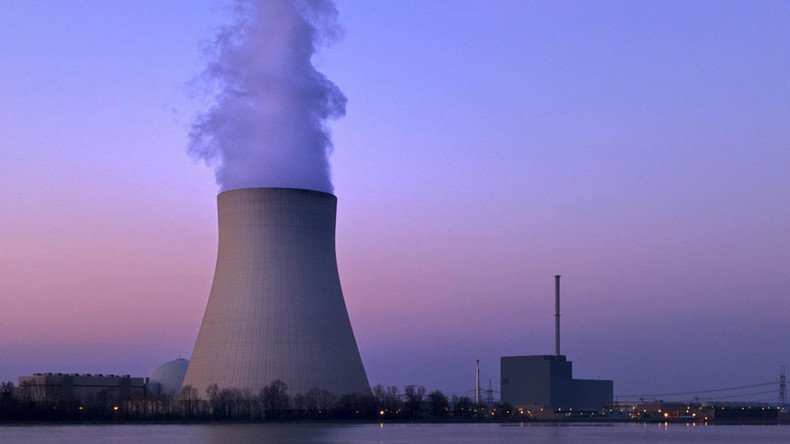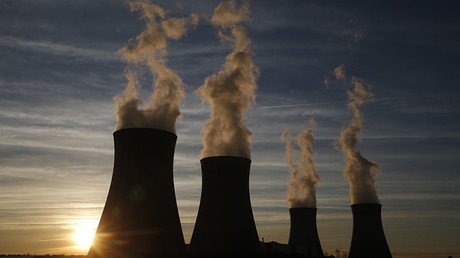Global nuclear power capacity could double by 2050

The world’s installed nuclear power capacity could increase by 123 percent in 2050 compared to 2016 levels, the International Atomic Energy Agency (IAEA) said in a report this week.
These projections, however, are the so-called high in 2050. In the low case, the IAEA estimates are for a decline in capacity in the near future, followed by a rebound to current levels nearer 2050. In the high case, nuclear capacity is expected to rise from 2016 levels by 42 percent in 2030, 83 percent in 2040, and by 123 percent by mid-century.
The main factors that are and will be influencing the future of nuclear energy are public acceptance, financing, and electricity markets.
“If nuclear power’s potential as a low-carbon energy source grows in recognition and advanced reactor designs further improve both safety and radioactive waste management, the use of nuclear power could grow significantly,” the IAEA says.
At the end of 2016, installed nuclear capacity reached 392 gigawatts (electrical) (GW(e)), which was the highest level ever, according to the IAEA.
However, funding and safety will be crucial to the development of nuclear energy.
“The safety performance of nuclear installations is crucial to the future of nuclear power, as a strong safety record is essential for its public acceptance,” the IAEA commented, noting that “The financing of nuclear projects is challenging, given the highly capital-intensive nature of such projects, their resulting sensitivity to interest rates and construction durations, and the nature of the uncertainties.”
Read more on Oilprice.com: Are strong US crude inventory draws sustainable?
North America and Europe will see declines in nuclear capacity, while China’s nuclear energy plans will be the main driver of growth, the IAEA reckons.
Oil supermajors BP and ExxonMobil also project that China’s installed nuclear capacity growth will be the key driver of this type of power generation.
In the US, nuclear power currently accounts for around 20 percent of electricity generation. According to the EIA, more nuclear capacity in the US will be retired than built, as other fuels such as natural gas and renewables gain market share. In EIA’s reference case estimates, the share of nuclear in the US electricity generation mix will drop from 20 percent last year to 11 percent in 2050, while natural gas will grow the most, followed by renewables.
According to the IAEA, reduced competitiveness is the main reason for planned premature shutdowns “low natural gas prices, particularly in the USA, caused by a rapid expansion of shale gas production, have fundamentally transformed the energy economy.”
In Europe, Germany ordered the immediate shutdown of eight of its 17 reactors in the wake of the Fukushima disaster in Japan, and plans to phase out nuclear plants by 2022. Earlier this year, Switzerland—which has five ageing nuclear power plants generating one-third of its energy demand—voted to phase out nuclear power in favor of renewables.
The IAEA’s low-case projection is that the share of nuclear in global electricity generation could drop from the current 11 percent to 6 percent in 2050, while the high-case sees that share rising to 13.7 percent in 2050.
BP and Exxon, in their respective 2017 energy outlooks, see nuclear playing a part in the transition of the global fuel mix.
BP’s most recent annual energy outlook sees renewables, together with nuclear and hydroelectric power, accounting for half of the growth in energy supplies over the next 20 years. While nuclear capacity in Europe will decline by 2035 due to decommissioning of ageing plants and little investment in new capacity, Japan could restart some reactors but would not return to pre-Fukushima levels. China’s ambitious nuclear energy plan will account for almost three-quarters of the global increase in nuclear generation. As a result, BP sees the share of coal in China’s energy demand down from around two-thirds in 2015 to less than 45 percent by 2035. Much of the lower share of coal will be replaced by renewables, nuclear, and hydroelectric power, which will supply more than half of China’s increasing energy demands until 2035, BP says.
Exxon’s current outlook through 2040 sees nuclear growing, with more than 50 percent of the growth coming from China.
“Society’s push for lower-emission energy sources will drive substantial increases for nuclear power as well as renewables such as wind and solar. By 2040 nuclear and all renewables will be approaching 25 percent of global energy supplies,” Exxon reckons.
Public acceptance, safety records, the price of natural gas, and climate policies will be crucial to the future of nuclear energy.
This article was originally published on Oilprice.com














